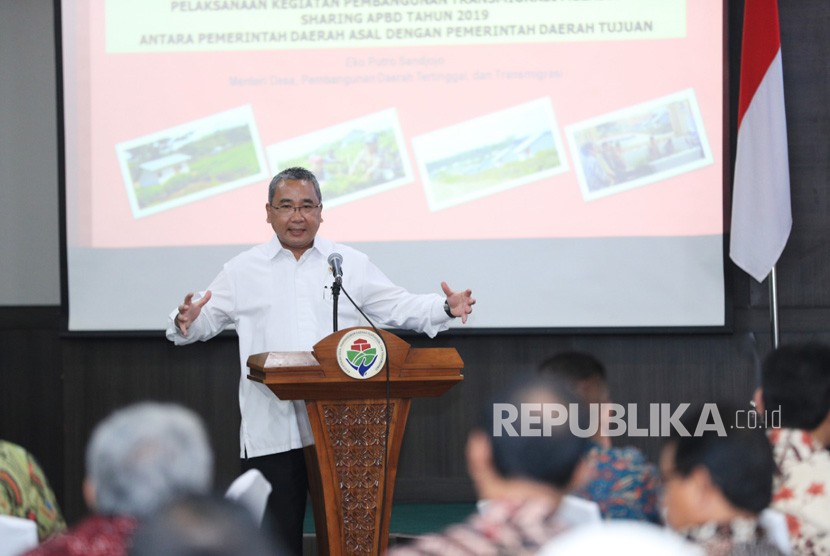REPUBLIKA.CO.ID, JAKARTA -- Minister for Villages, Development of Disadvantaged Regions and Transmigration Eko Putro Sandjojo said village funds were less effective if given to an area that lacks main infrastructure support. For example, if the roads do not exist, we have to use planes, he said.
"The 1M fund becomes ineffective because of anything expensive," Sandjojo stated when he released the 2018 village potential data collection in the Office of the Central Statistics Agency (BPS) in Jakarta on Monday.
According to him, village funds are only part of President Joko Widodo-Jusuf Kalla's program, which must be supported by program synergies between ministries or other institutions, especially regarding infrastructure development projects such as roads, and the availability of affordable fuel oil.
"There is a Trans-Papua program and One Price of Fuel Oil. So, if fuel is expensive, village funds will also become ineffective," he noted.
The allocation of village funds had increased from 2015 to 2018. In 2015, village fund allocations reached Rp20.67 trillion, then increased to Rp46.98 trillion in 2016, and then to Rp60 trillion in 2017 and 2018. The absorption itself also increases every year. In 2015, village fund disbursement reached 82.72 percent, increased to 97.65 percent in 2016, and reached 98.54 percent in 2017.
Previously, each village only received around Rp280 million per village. Currently, each village receives around 800 million per village.
Based on the 2018 data of villages' potentials released by BPS, there is a Village Development Index (IPD), which is an index showing the level of development of villages with lagging, developing, and independent status. According to the results of the categorization of IPD, underdeveloped villages reached as many as 14,461 villages (19.17 percent), developing villages reached 55,369 villages (73.4 percent), and independent villages reached 5,606 villages (7.43 percent).
The number of villages with underdeveloped status was reduced by 6,518 villages, exceeding the government's target in the 2015-2019 midterm development plan (RPJMN), namely the reduction of five thousand disadvantaged villages. Similarly, the target of adding independent villages passed the target of two thousand villages.
However, with regard to disadvantaged villages, the largest number of disadvantaged villages is still in eastern Indonesia, such as the islands of Papua, Maluku, and Kalimantan. These islands have a high number of disadvantaged villages; for example, Papua at 87.12 percent, West Papua at 82.03 percent, Maluku at 46 percent, North Maluku at 37 percent, and North Kalimantan at 61 percent.



